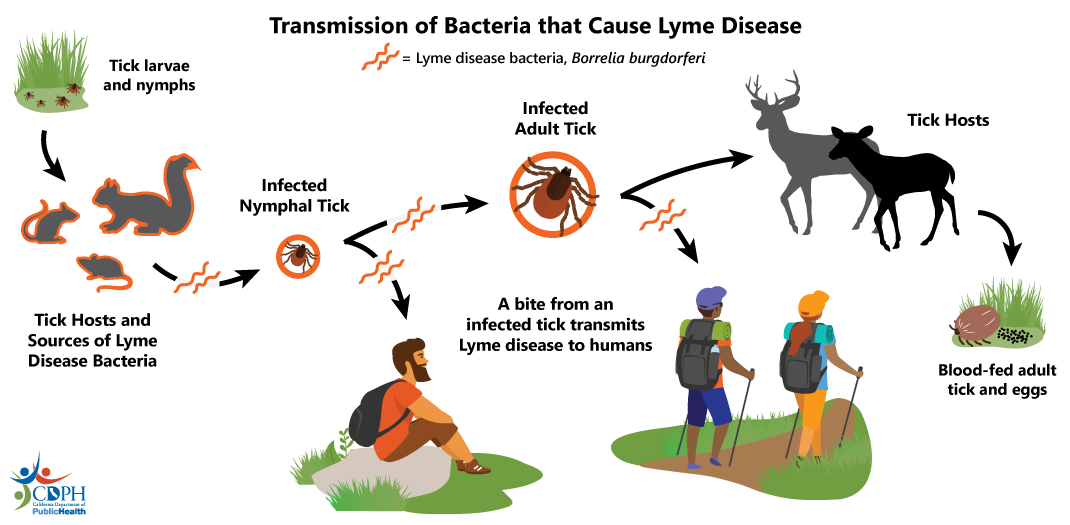Ticks
In the United States, seven kinds of hard ticks and five kinds of soft ticks carry diseases, are a nuisance, or cause paralysis. Often these diseases are transmitted by the tick's saliva during feeding behavior. However, some diseases, such as tularemia, can enter through the skin if a person comes into contact with a crushed infected tick.
In recent years, Lyme disease has become the most reported arthropod borne disease in the country. Many experts feel that if it were not for AIDS, Lyme disease would be the number one infectious disease in the United States.
The most common ticks found in Butte County are: the Western black-legged tick, Ixodes pacificus, the American dog tick, Dermacentor variabilis, the Pacific Coast tick, Dermacentor occidentalis; and the Brown dog tick, Rhipicephalus sanquineus.


Ticks are found wherever their hosts are found. Some ticks feed on only one type of host, while others suck blood from many different animals. When not attached and feeding on their hosts, most hard ticks live on the ground in vegetation, such as grassy meadows, woods, brush, weeds, leaf litter, etc. Most ticks will crawl to the tips of grasses, brush, leaves, or branches and wait. With their front legs outstretched, they will wait for a host to brush up against them. This behavior is called questing. When the tick does come into contact with an animal, it will grab on and crawl to an appropriate area on the animal to feed.
